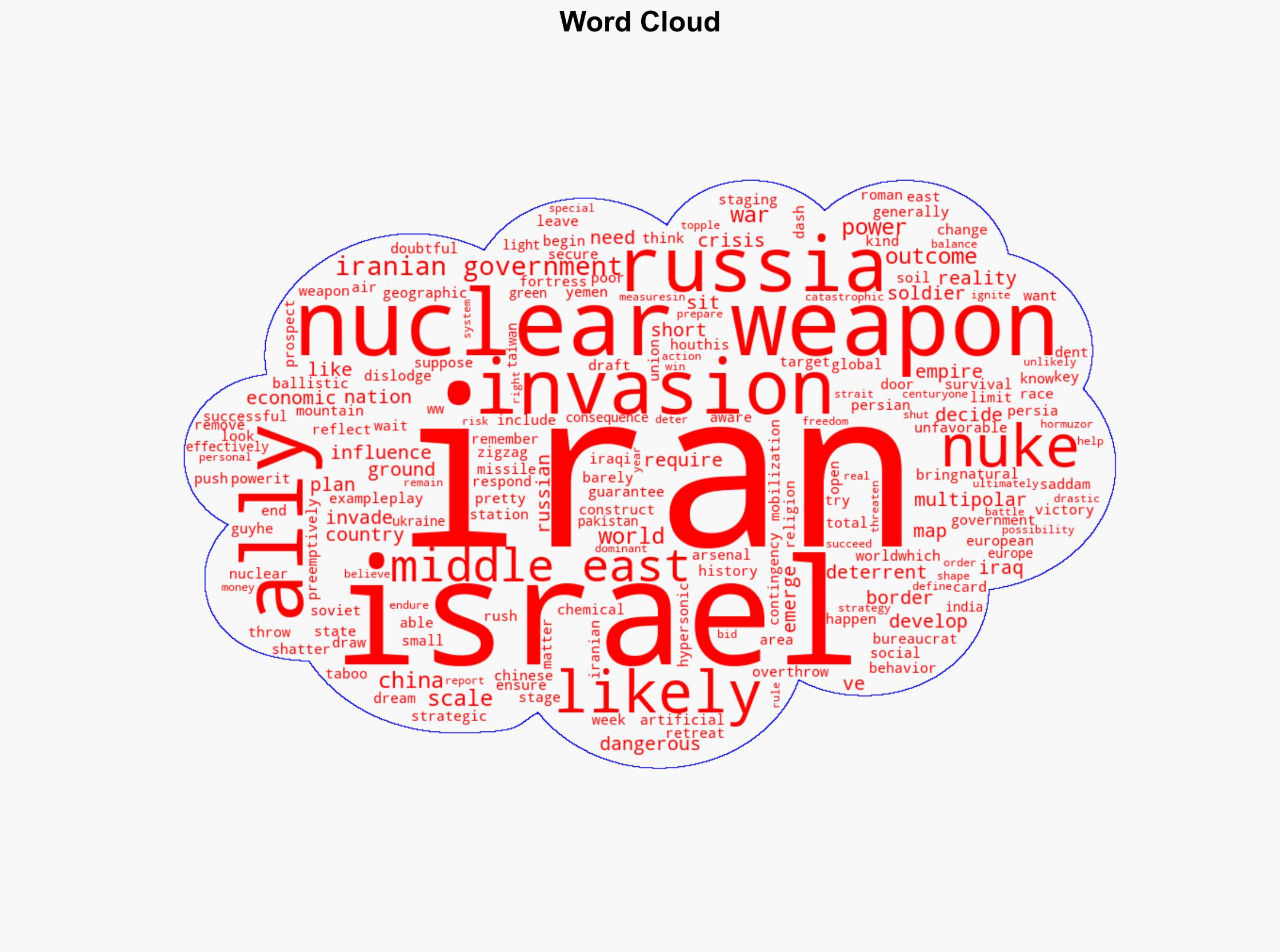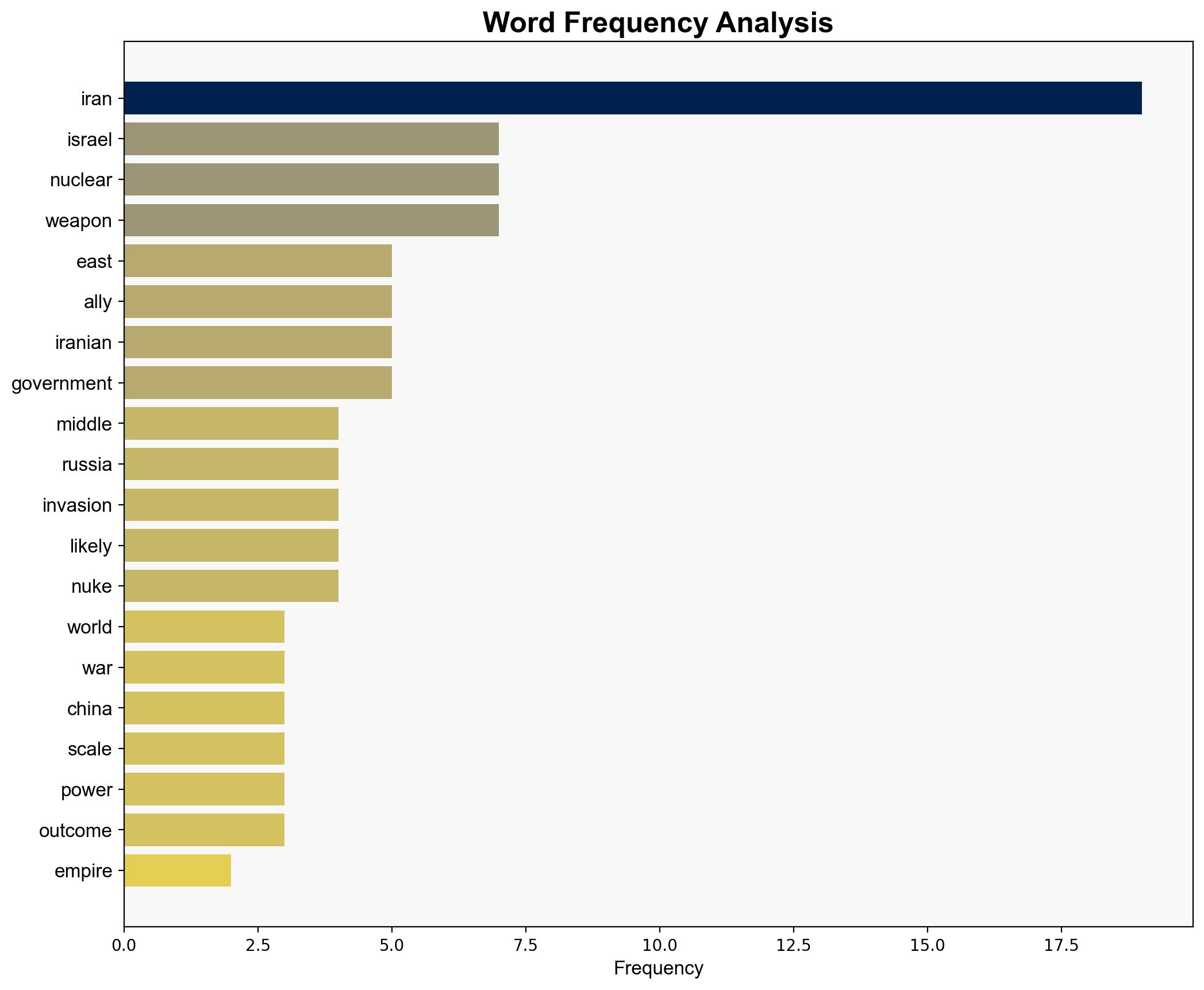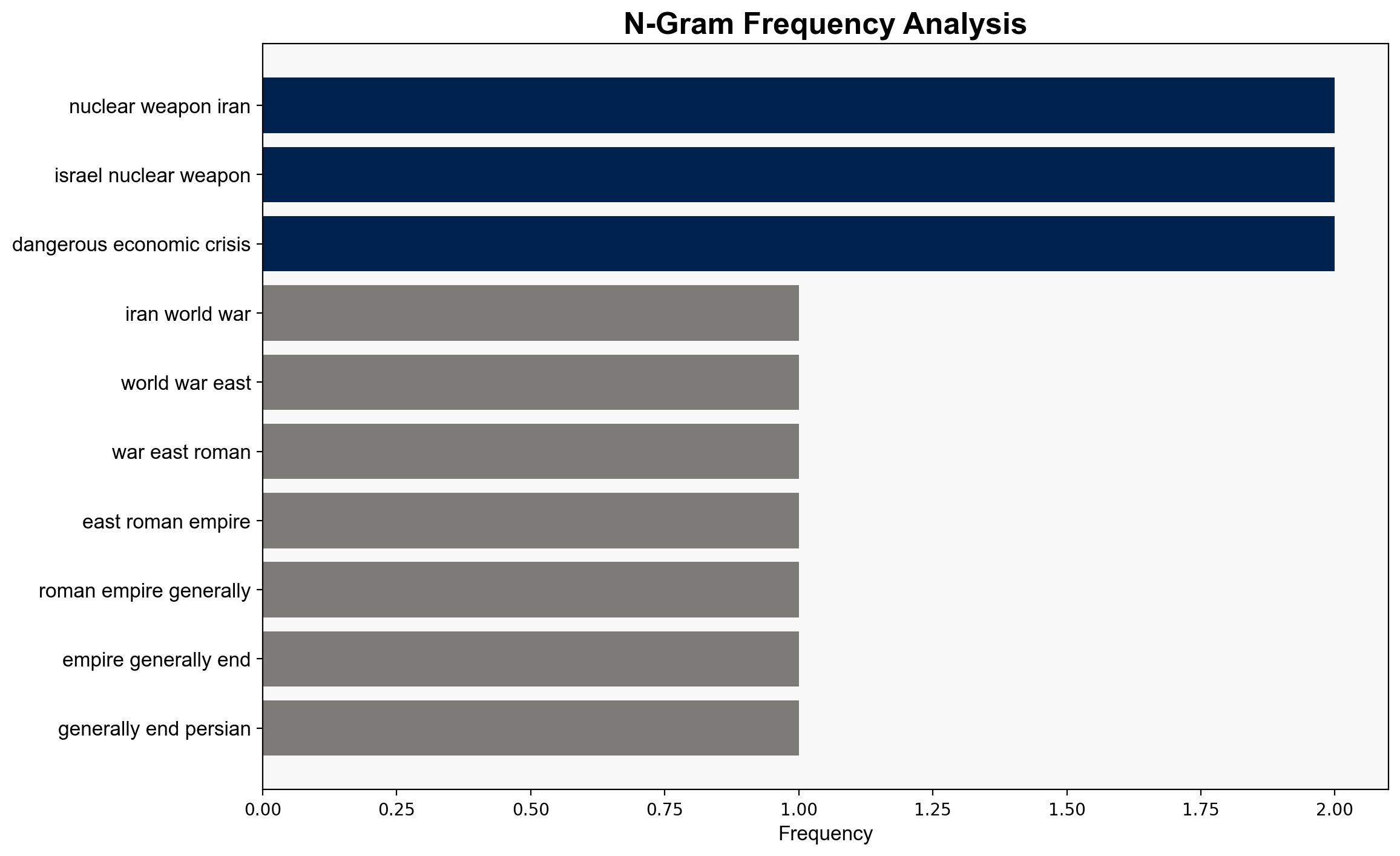Iran and World War 3 – Activistpost.com
Published on: 2025-09-03
Intelligence Report: Iran and World War 3 – Activistpost.com
1. BLUF (Bottom Line Up Front)
The strategic judgment indicates a medium confidence level that Iran is actively seeking to enhance its regional influence while preparing defensive measures against potential external threats. The most supported hypothesis suggests Iran’s strategy is primarily defensive, aimed at deterring aggression rather than initiating conflict. Recommended action includes diplomatic engagement to de-escalate tensions and monitoring of military developments in the region.
2. Competing Hypotheses
– **Hypothesis 1**: Iran is preparing for a defensive posture to deter potential aggression from Israel and its allies, focusing on developing a nuclear deterrent and strengthening alliances with Russia and China.
– **Hypothesis 2**: Iran is actively pursuing a strategy to become the dominant power in the Middle East, potentially through aggressive actions that could provoke a larger conflict.
Using ACH 2.0, Hypothesis 1 is better supported due to Iran’s historical focus on defense and deterrence, as well as its strategic partnerships with Russia and China, which align with a multipolar world vision.
3. Key Assumptions and Red Flags
– **Assumptions**: It is assumed that Iran’s primary goal is regional stability and deterrence rather than expansion. The effectiveness of Iran’s alliances with Russia and China is also assumed to be strong.
– **Red Flags**: The potential for cognitive bias exists in underestimating Iran’s offensive capabilities or intentions. The lack of concrete evidence regarding Iran’s nuclear capabilities and intentions is a significant gap.
4. Implications and Strategic Risks
The primary risk involves a miscalculation leading to military escalation, particularly if Israel perceives an imminent threat from Iran. Economic implications include potential disruptions in global oil markets if the Strait of Hormuz is threatened. Geopolitically, increased tensions could strain US-Russia-China relations, complicating diplomatic efforts.
5. Recommendations and Outlook
- Enhance diplomatic channels with Iran to clarify intentions and reduce the risk of misinterpretation.
- Monitor military movements and alliances in the region to anticipate potential flashpoints.
- Scenario-based projections:
- Best Case: Diplomatic resolutions lead to reduced tensions and a stable Middle East.
- Worst Case: Miscalculations result in military conflict involving multiple state actors.
- Most Likely: Continued strategic posturing with periodic diplomatic engagements.
6. Key Individuals and Entities
– Iran’s Supreme Leader
– Key military leaders in Iran
– Influential figures in Russia and China
– Israeli government officials
7. Thematic Tags
national security threats, regional focus, geopolitical strategy, military deterrence





